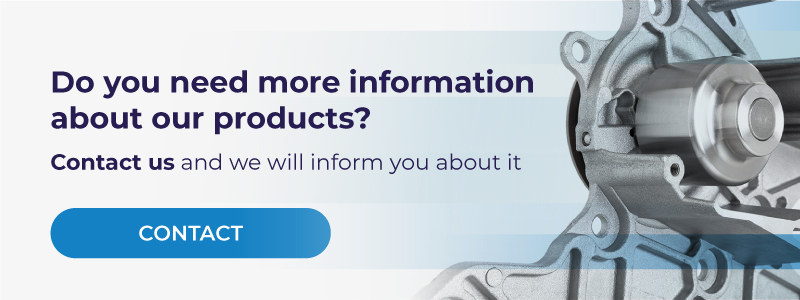In a typical timing belt drive configuration, the belt is wrapped around one or more pulleys that always keep it taut and aligned. In today’s article we learn a little more about one of these components, the tensioner pulley, and its importance in the transmission of our vehicle.
The importance of the tensioner pulley
The timing system is essential to maintaining the good performance of a vehicle. In it, the responsible for achieving a precise transmission and for achieving a proper and constant tension in the belt is none other than the tensioning pulley.
Tensioner pulley main functions are:
- Increases the angle embraced in belt drives.
- Gives tension to the belt and transfers the driving force of the crankshaft.
- Compensates for the elongation of the strap, typical over time.
- Allow for shorter wheelbases.
- Prevents belt slippage.
Learn more: Reasons to replace the timing belt and the water pump
Tensioner pulley: Design
A pulley is a seemingly simple component, but how many types are there?
Its rolling surface can be both smooth and profiled and its basic components include a pulley in which a rigid radial bearing with one or two rows of balls is integrated. Inside it we find the inner ring and the outer ring, the retainer, the grease, and the seal.
Among the different types of tensioner pulleys, we differentiate between those that are fixed or automatic, being the last one capable of compensating their status regardless of the temperature reached or the load changes on the belt.
When to replace a tensioner pulley?
As the belt, the pulley is a maintenance item, which means that it does wear out over time; mainly due to its free spinning activity.
Generally, pulleys will last longer than belts, so inspecting the pulleys and bearings through maintenance is key for best practice. In many cases and depending on the materials from which the pulleys are produced, It is becoming more and more common to carry out the complete maintenance of the primary transmission replacing all the components of the distribution subject to wear at once.
At Dolz we also always recommend replacing the water pump in this same operation for three reasons:
- Greater quality and safety of the service provided.
- Best fit together of all components from the start.
- Greater savings. Reduction to half of the visits to the workshop.
Signs of a failing tensioner pulley
A fault in the distribution system can be fairly easily diagnosed if paying attention to a number of warning signals.
Tips for detecting a worn pulley and the need to replace the full system:
- If you can hear odd noises such as a squealing, grinding or screeching sound coming from your vehicle, this is likely caused by a seized or loose bearing in the pulley.
- If the noise coming from the vehicle’s engine sounds more like a chattering kind of noise, it is probably the pulley itself that is seized up or loose.
- If you have the chance to look into the pulley and it shows a corroded surface, it means that it will probably cause premature wear on the belt.
- If when spinning the pulley, it keeps spinning excessively (more than a few rotations), or it is not spinning at all, the pulley is not working properly. And sooner rather than later it will end up breaking down.
Replacing broken and worn pulleys is not an option. Pulleys should move freely but softly, and without wobbling or hesitation. Although the need for replacement will probably translate into noticeable noises coming from the vehicle, it is crucial to undertake periodical and preventive maintenance for best engine performance.
Best practices for tensioner pulley maintenance
To ensure the longevity and efficiency of your vehicle’s engine, proper maintenance of its various components is essential. One such component is the tensioner pulley, which is responsible for maintaining proper tension on the engine’s accessory belts. Regular maintenance of the tensioner pulley can prevent costly repairs and extend the life of your engine:
- Regular inspections: Inspect the tensioner pulley at least once a year or as recommended by the manufacturer. Look for signs of wear, damage, and looseness.
- Lubrication: Lubricate the tensioner pulley as recommended by the manufacturer. Over-lubrication can attract dirt and dust, causing premature wear, so be sure to follow the recommended amount.
- Cleaning: Keep the area around the tensioner pulley clean and free of debris. Dirt and dust can accumulate in the pulley and cause damage over time.
- Replacement: Replace the tensioner pulley if you notice any signs of wear, damage, or looseness. Don’t wait until the pulley fails, as this can cause other components to fail as well.
- Belt replacement: Replace the accessory belt and tensioner at the same time. This will ensure proper tension and prevent premature wear of the belt and pulley.
Keep reading: All you need to know about Dolz kits
Dolz: Your trusted manufacturer
With more than 80 years of history, Dolz is your trusted manufacturer and distributor. The Dolz kits include all the components required for a professional repair, from the belt and pulleys to the necessary bolts and nuts.
If you are looking for a premium partner with quality products equivalent to OE, contact us or browse through our catalogues for an effortless buying experience!



